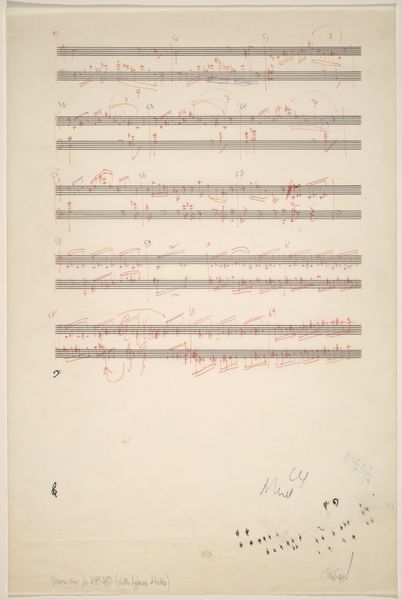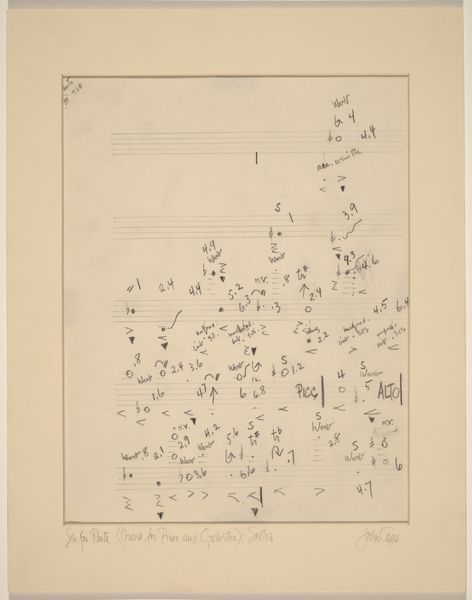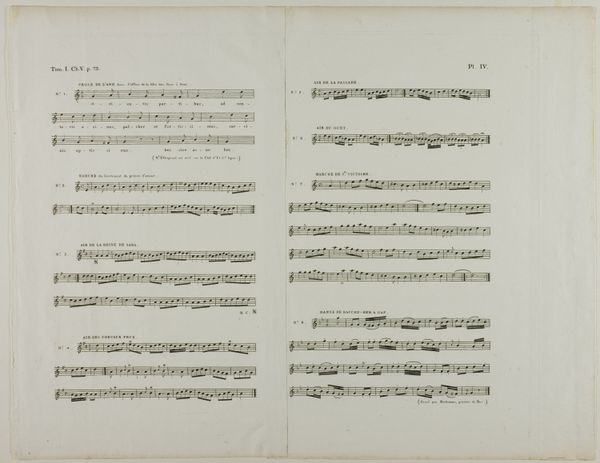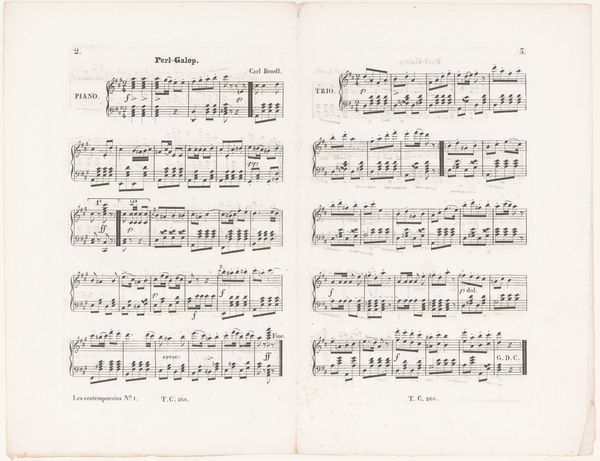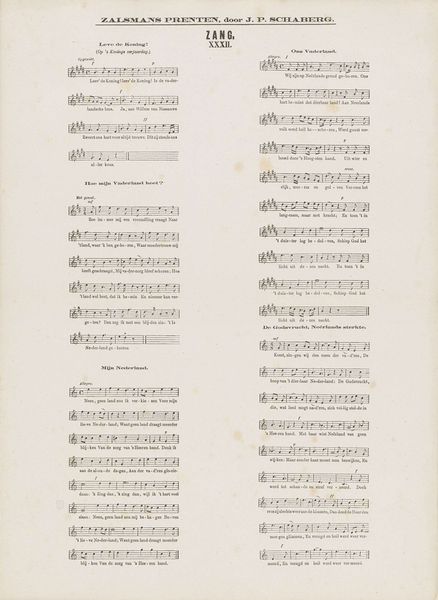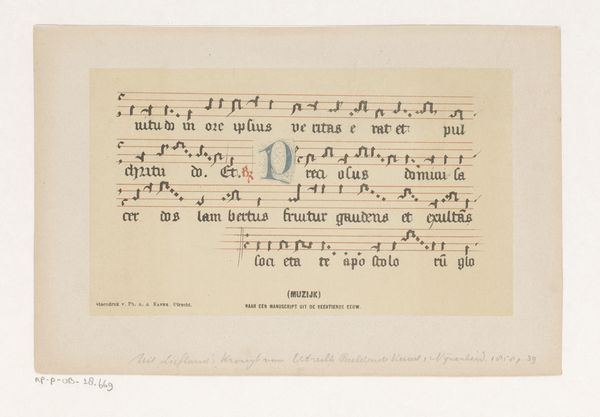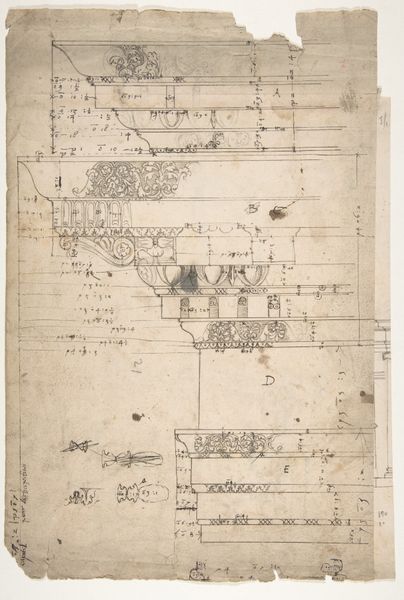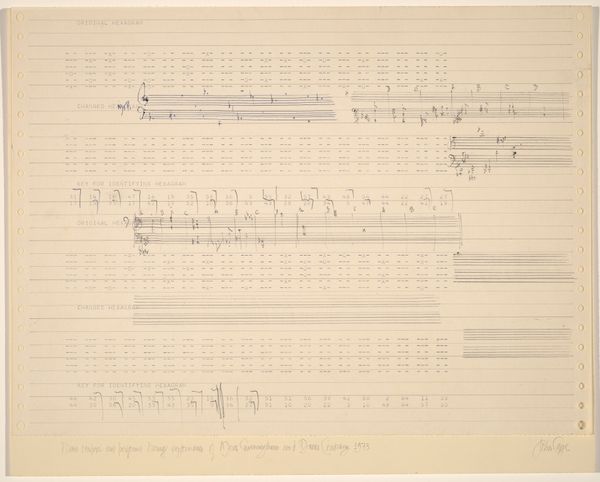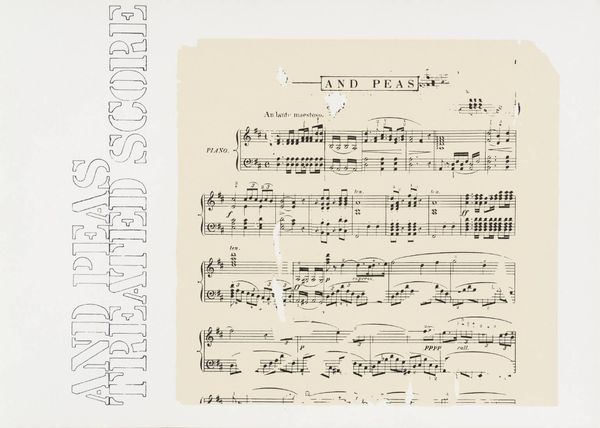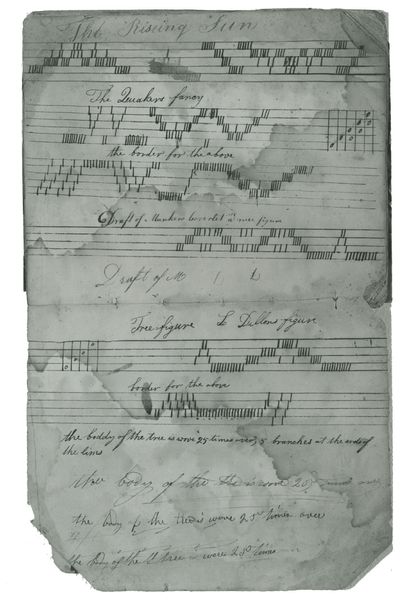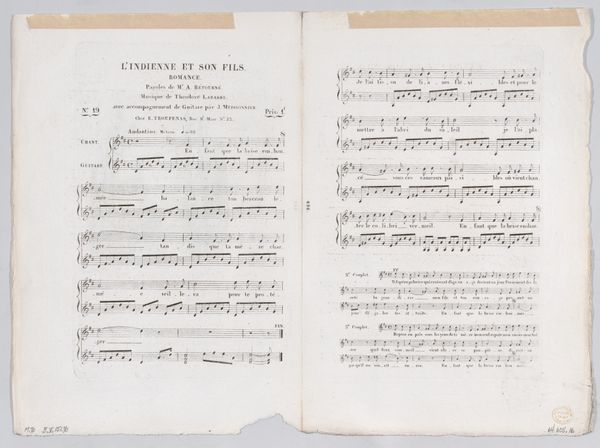
drawing, paper, ink
#
drawing
#
paper
#
ink
#
geometric
#
black-mountain-college
#
abstraction
#
line
#
modernism
Dimensions: overall: 27.9 x 21.6 cm (11 x 8 1/2 in.)
Copyright: National Gallery of Art: CC0 1.0
Editor: Here we have John Cage's "Solo for Violin (Concert for Piano and Orchestra): Sketch," an ink drawing on paper. It feels more like a puzzle than sheet music; very abstract, with all these enigmatic symbols and lines scattered about. How do you interpret this work? Curator: Well, let's unpack the context. Cage was deeply engaged with challenging traditional structures, be they musical or social. This "sketch," with its seemingly random markings, isn’t really about conventional notation. It's a score, yes, but it's also a form of rebellion against the composer's role as the sole architect of a musical experience. Editor: So it's about deconstructing authority? Curator: Precisely! Consider Cage’s interest in Zen Buddhism and chance operations. He's relinquishing control, inviting the performer to become a co-creator. The visual representation mirrors this; it resists a singular interpretation, just as he hoped the music would. We must look beyond conventional art and music expectations. It's a political statement against codified structures. Editor: It's fascinating to think of a musical score as a political act! The randomness becomes intentional, subverting established norms. Curator: Exactly. Cage used his art to question authority, both musical and social. It makes you think about who has the power to define what art is and what music should sound like, doesn’t it? Editor: Definitely. I initially saw chaos, but now I see deliberate disruption. Thanks to your historical framing, the work is charged with social commentary and gains new depths.
Comments
No comments
Be the first to comment and join the conversation on the ultimate creative platform.
